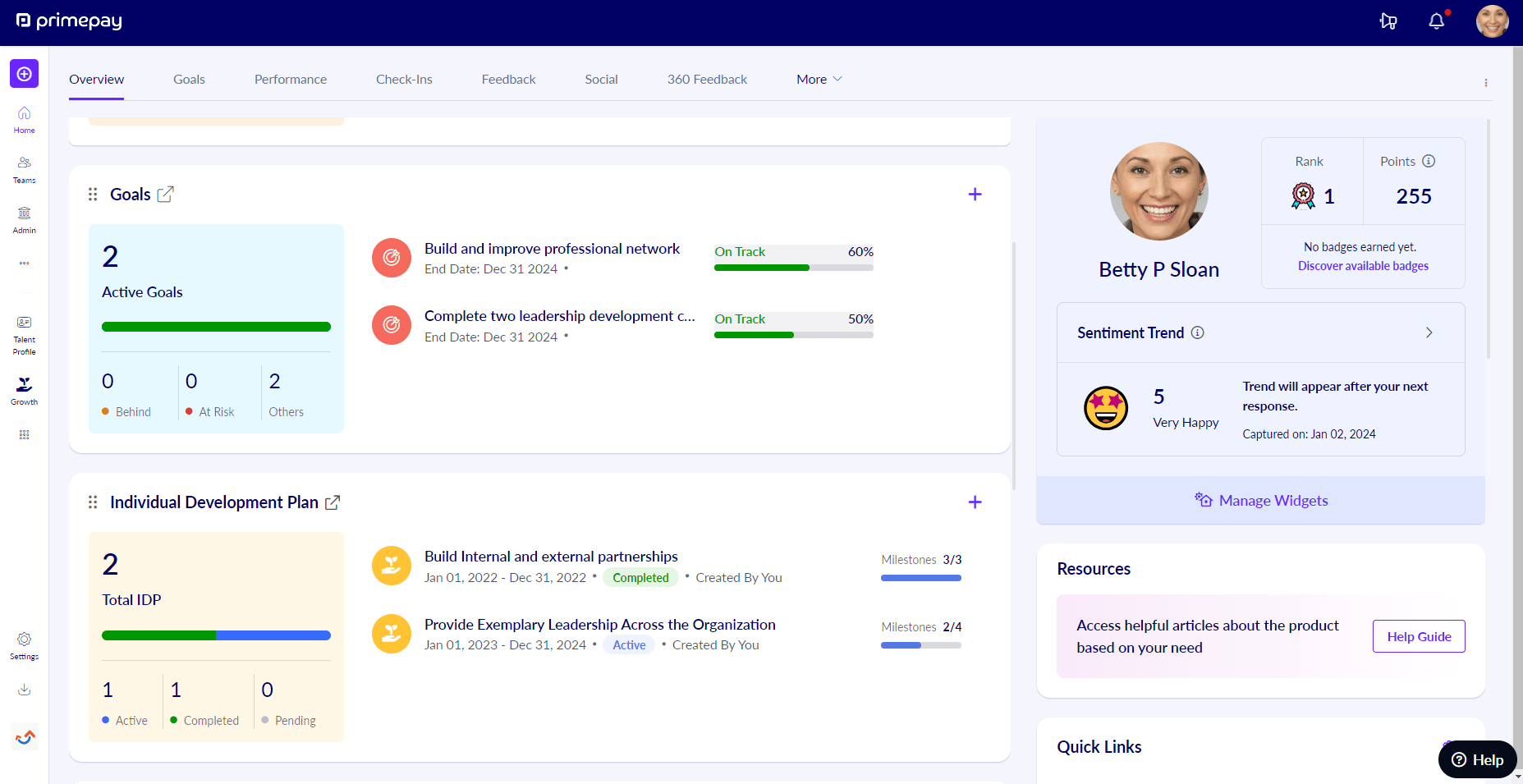Managing remote work isn’t new. Barry Marshall, former COO of JP Morgan, remembers coordinating teams across the country and the globe since the 1990s.
But if remote work isn’t new, why is it still so hard to perfect?
While it isn’t a fresh-out-of-the-box concept, working remotely was a brand-new experience for many organizations once the pandemic hit. What countless companies thought would be a brief dip in the remote work pool turned into a permanent swim.
Fast-forward to now, and more than 4.7 million U.S. employees work remotely at least half the time. Remote work isn’t temporary anymore, and it requires you to transform your remote management to support your employees wherever they are.
Marshall offers the key to this transformation: effective management with a strong foundation in building trust and open communication.
The Foundation of Effective Remote Management
They say management can make or break a company, and this holds especially true for remote work. To ensure success, create a strong foundation that enables your managers to build their teams.
Weave In Company Values
Company values are the code that defines acceptable, expected, and valued behaviors, forming the foundation of an organization.
These values:
- Guide employees in their decision-making processes.
- Help them achieve company goals.
- Connect them to their purpose at work.
Before integrating company values into your remote management strategy, you must clearly define them.
Start by reflecting on your organization’s mission, vision, and culture to identify the values that guide the company. Note that there are different types of values – core, aspirational, permission-to-play, and accidental – and it’s crucial to recognize what your leadership and culture are cultivating.
Your core values serve as a compass to help everyone understand why the company operates the way it does and foster a sense of connection and alignment with company goals and objectives.
Consultant and author Patrick Lencioni warns that not establishing basic definitions undermines many values initiatives: “Too often, executives mistake other kinds of values for core values. The resulting hodgepodge bewilders employees and makes management seem out of touch.”
After finalizing them, weave your core values into the employee lifecycle and overall culture.
Example of Core Values in the Workplace
Let’s examine 3M to understand how this works. 3M is a company that thrives on innovation. If you’ve ever wrapped a gift with Scotch tape, hung something with Command strips, or jotted down a reminder on a Post-it Note, you’ve experienced the ingenuity of 3M.
3M values curiosity, creativity, and collaboration as a way of getting things done. To incorporate these values, managers encourage employees to spend 15% of their workday on passion projects outside their job descriptions, which incites more curiosity and creativity.
3M also offers mentorship programs and Employee Resource Networks to foster collaboration beyond employees’ usual teams. Without this creativity and collaboration, products like the Post-it Note wouldn’t exist today.
By embedding company values into its employee lifecycle and company culture, 3M built a strong foundation that connected its employees to their purpose and company goals.
Meet More Often
Regular check-ins are crucial for effective remote management. While annual performance reviews are important, frequent, informal check-ins help managers:
- Set a tone where employees feel comfortable communicating openly with their managers.
- Keep everyone informed on company events.
- Address issues before they escalate.
- Build trust and open communication.
Scheduled meetings also help avoid the “Have a minute?” Slack chat that can induce panic, especially during times of change.
Remember that, in a physical workplace, employees can sense when something significant is happening, see the reduction in force (RIF), or read the mood when a manager stops by their desk. However, these cues are lost in remote work environments, making it easy for employees to enter a spin cycle when a random meeting (without context) is put on their calendars.
Check-In to Support
Make sure to focus the meetings on checking in rather than checking up. Checking up insinuates that you’re only worried about the work being done and not the employee.
Allow employees to ask questions, relay concerns, and simply discuss what’s going on with them at work. This approach cultivates a supportive remote environment where employees feel valued and heard.

PrimePay’s Performance Management Pro offers a range of templates designed to support effective employee performance management – including tools for check-ins – to ensure your management processes remain transparent and supportive.
Remote Manager Best Practices
Here are a few best practices for remote managers to help bolster the foundation of remote management, build trust, and align employees with company goals. These strategies ensure remote teams remain engaged, motivated, and in sync with the organization’s objectives.
1. Become A Coach
Management alone is about providing direction, setting goals, developing workflows, and managing performance. However, effective remote management requires more than the basics; it requires coaching.
Coaching goes further by building stronger connections with employees and fostering growth. It involves helping employees recognize areas for improvement, guiding them toward the best solutions, and supporting them along the way.
Two of the best qualities of a good manager that make them excellent coaches are being an active listener and demonstrating empathy. These characteristics allow managers to connect with their employees on a deeper level, which fosters trust and encourages growth. These qualities become even more essential for remote managers with limited physical oversight.
Asking perceptive questions can enrich this understanding for managers and help them ensure their employees are fully equipped to achieve company goals.
Insightful questions to ask:
- What do you see as the next level in your career?
- Is there anything we could have done to make the last project better?
- Do you have the right resources to accomplish that next time?
Such questions help unveil employees’ true potential and ensure they’re engaged even from a distance. At the same time, managers can coach employees in a way that continuously aligns them with the company’s mission and goals.
2. Attend Manager Training
Like employees, managers need the right tools and training to excel in their roles. Managers can’t effectively manage the company’s people without the proper preparation for today’s remote work environment.
When remote teams aren’t physically in the office, some managers may unintentionally resort to micromanaging. This tendency often isn’t malicious; it typically stems from a feeling of having less control over employees’ activities or a lack of proper training to manage remotely.
According to Gartner’s VP Analyst, Daniel Sanchez, “Whether they admit it or not, micromanagers usually feel that they can’t trust employees to perform their jobs away from the physical office environment.”
Unfortunately, micromanaging can backfire, reducing employee productivity, engagement, and morale. Statistics reveal that 55% of employees say micromanagement hinders their productivity, while 68% report it decreases their morale. Even more striking, 39% of employees have left jobs to escape micromanaging bosses.
These figures underscore the importance of training managers to delegate effectively and empower employees with autonomy. While autonomy might seem like abandonment, training can show managers how to balance trust and oversight.
3. Prioritize Team Engagement And Well-Being
In the remote work environment, where employees often feel isolated and disconnected from their teams, prioritizing engagement and well-being is more than a nice-to-have.
Unlike traditional office settings, remote employees don’t have the daily in-person interactions that naturally foster camaraderie and a sense of belonging. The lack of connection can lead to decreased engagement and productivity. In fact, disengagement accounts for $1.9 trillion in lost productivity.
Engagement and well-being initiatives are therefore crucial for motivating remote teams and aligning them with company goals.
Consider:
- Providing opportunities for social interactions and virtual team-building.
- Encouraging and modeling work-life balance.
- Offering wellness and mental health resources.
By prioritizing engagement and well-being, managers can boost morale and create a supportive environment where remote employees feel valued, engaged, and motivated to perform their best.
4. Provide Extra Support in Times of Change
With economic and workplace changes becoming more prevalent, managers face the challenge of effectively supporting and managing remote teams.
Yet, these challenges can be successfully managed with empathetic leadership. Compassionate leadership involves showing empathy, promoting open communication, and creating a supportive work environment where team members feel understood and appreciated.
Of course, practicing compassionate leadership can be challenging. It requires:
- Making difficult decisions.
- Demonstrating acts of care and selflessness.
- Helping people develop the strength and skills required to address work-related issues independently.
Despite these challenges, the advantages of empathetic leadership greatly surpass the difficulties, resulting in improved employee morale and productivity.
Setting The Stage For Effective Remote Management
As remote work solidifies its place in the modern workplace, the challenge isn’t just managing from a distance. Instead, it’s about building a foundation that supports your teams (no matter where they are) and drives them forward with purpose and clarity.
By shifting toward coaching, prioritizing employee engagement, and training managers to balance trust and autonomy, you can create an environment where your remote teams are engaged, motivated, and aligned with the company’s mission.
The foundation you lay today will significantly determine the success of your remote teams in the future.










